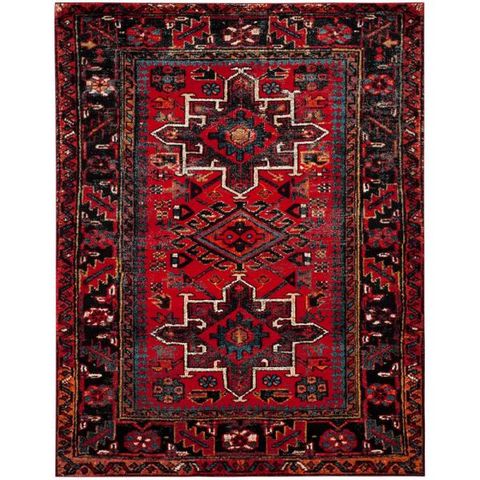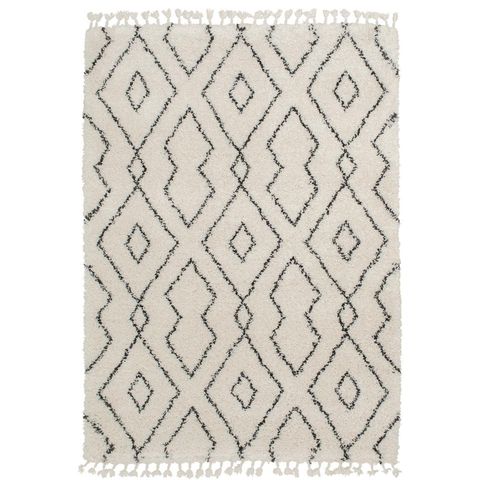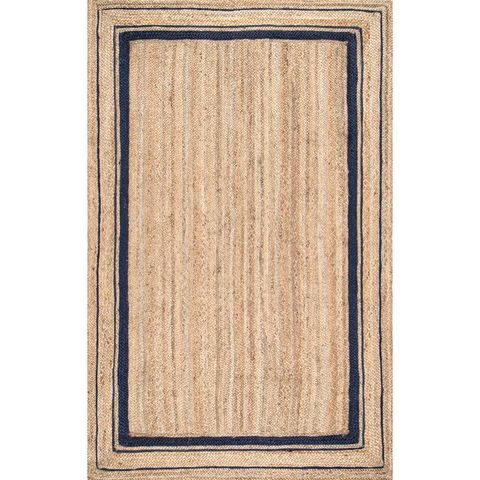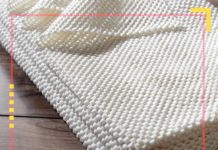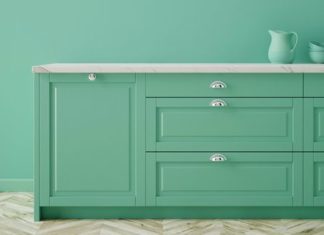While eye-catching details certainly make a room’s design pop—a whimsical light fixture here, the perfect polished-meets-punk cabinet handles there—you should take it from the experts and start from the ground up.
“Area rugs can bring all of the pattern and color and interest that you need in a space, so we often start with the rug and build from there,” says Laura Umansky, President & Creative Director of the Laura U Design Collective. Umansky also believes that area rugs can be an asset atop any flooring, from classic hardwood to tile and beyond. “We use area rugs on pretty much any surface, so I don’t think there’s a flooring material you can’t layer a rug over. I think it’s more a choice of space utilization.”
The Home Depot has tens of thousands of options which, at the outset, can be intimidating. But the variety is, in fact, an asset, especially if you take note of the following guidelines in your search.
Size up the situation
People often tend to pick an area rug that’s too small for their intended space, which in turn makes the room feel disjointed. An area rug should be no less than six inches and no more than about two feet away from a wall, and ideally skirt the perimeter by about 12 inches.
And don’t forget passageways: Runners can breathe life into long stretches of hallway that might otherwise feel claustrophobic and help to unify design between rooms. (Keep just a couple of inches of space on each side to avoid crowding your baseboard.)
Alternatively, in open floor plans, area rugs can be utilized to define spaces more clearly, creating different environments as you move between them. And, of course, always use a non-slip pad—necessary for ensuring extra comfort and that your rug doesn’t scoot around— which we talk about in detail under letter N.
RUG SIZING 101
Different rug sizes will change the look of a living room, bedroom, or dining room.
Decide on patterns, pigments, and pile
“A rug with classic colors is going to work with a range of decor styles, but if you want to be trendy or experimental, a bolder area rug is a great way to do that without bringing in a professional team,” says Jessica Pleasants, Project Manager at Godwin Residential Construction. She notes that many designers are now layering area rugs with smaller rugs—or a couple of area rugs together—for a mixture of textures and colors that creates a lux, relaxed look. (Tip: Use carpet tape to keep rugs secured to one another.)
But choosing to add an area rug isn’t just an aesthetic consideration—it’s one that can completely change the way you use a space day-to-day. “An area rug really adds warmth to a room, and it’s far more comfortable when you’re sitting on a rug while playing with your kid versus just the floor,” Pleasants says.
Area rugs can easily become gathering spaces for game nights, afternoon movies, or cocktail hour, which means that these potentially high traffic (or high play) areas need to utilize materials that can weather a good amount of wear-and-tear while still feeling cozy. Look for low pile rugs that might already have a vintage, distressed feel, or Moroccan rugs, which often have a busier, color-saturated patterned that more easily mask the trample of feet day in and day out. Save thick, high pile rugs for places like bedrooms, where a little extra cushion is welcome.
Choose low pile rugs, which have low, dense fibers, for high traffic areas, and save thick, high pile rugs for places like bedrooms.
Think refined or ready for play
“The reason [low pile] area rugs are relatively easy to clean is because the pile is dense and low, so a lot of dirt doesn’t get trapped in there like it would in a regular pile carpet,” says Carolyn Forte, Home Appliances & Cleaning Products Director for Good Housekeeping. She recommends vacuuming once a week with a straight suction cleaner, which is less harsh on the rug.
When accidents do happen (and, as we all know, they will), tackling the problem quickly is critical. “If something spills, get to it right away and blot it with cool water,” Forte advises. “That goes a long way toward getting it out. If the water doesn’t take it out, I would say a little mild dish liquid and water solution should be able to get out most stains.”
Don’t rule out an outdoor rug
Forte also suggests looking at indoor-outdoor rugs as an option for rooms that might be prone to spills, like a dining room or breakfast nook. And then there’s jute: a natural fiber material that’s an eco-friendly, durable, and versatile choice for any busy area that needs a neutral, natural touch (like a home office or bedroom). Jute is also a budget-friendly option that’s less expensive than other natural fiber rugs, like sisal or seagrass, and is ideal for anyone with a rambunctious pet (or several) who might be prone to mess-making.
Of course, the needs of a home change—as do our whims. Look no further than… the area rug! Pleasants says they’re the perfect way to create a big mood without breaking the bank. “It’s easier to change an area rug than to change out hardwood floors!”




























